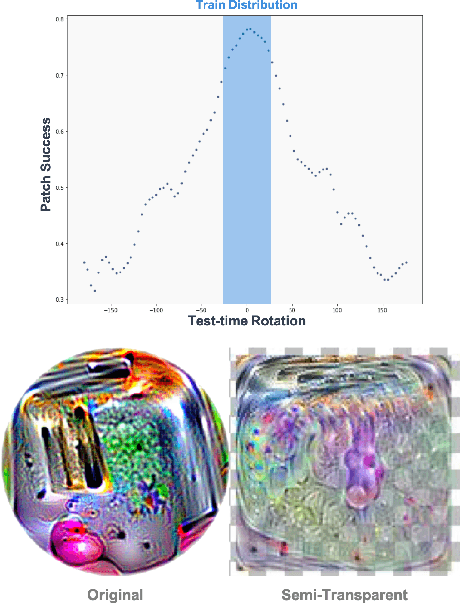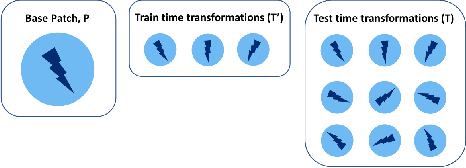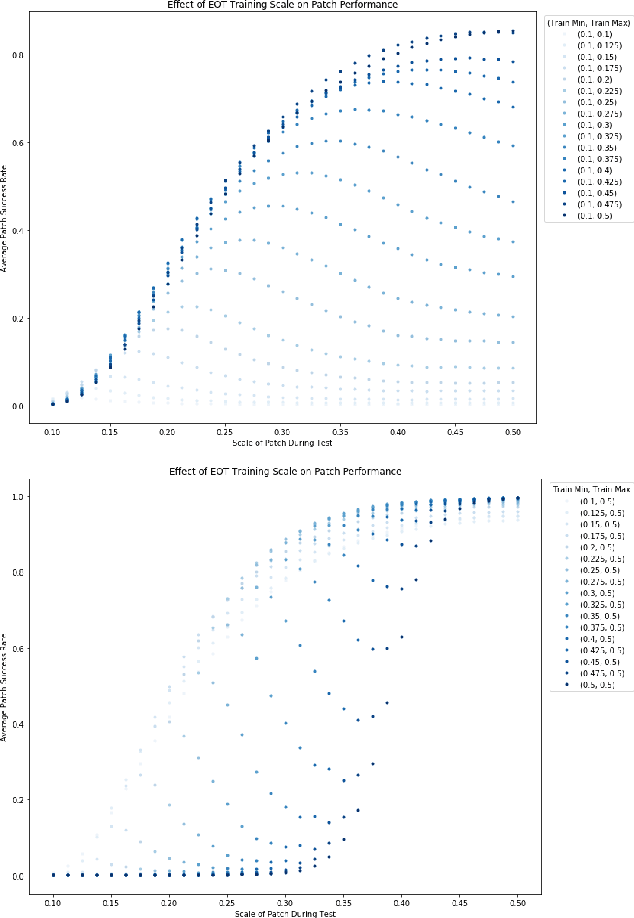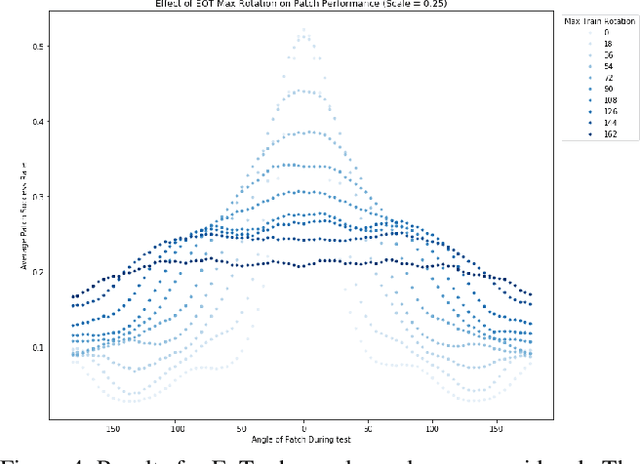Jacks of All Trades, Masters Of None: Addressing Distributional Shift and Obtrusiveness via Transparent Patch Attacks
Paper and Code
May 01, 2020



We focus on the development of effective adversarial patch attacks and -- for the first time -- jointly address the antagonistic objectives of attack success and obtrusiveness via the design of novel semi-transparent patches. This work is motivated by our pursuit of a systematic performance analysis of patch attack robustness with regard to geometric transformations. Specifically, we first elucidate a) key factors underpinning patch attack success and b) the impact of distributional shift between training and testing/deployment when cast under the Expectation over Transformation (EoT) formalism. By focusing our analysis on three principal classes of transformations (rotation, scale, and location), our findings provide quantifiable insights into the design of effective patch attacks and demonstrate that scale, among all factors, significantly impacts patch attack success. Working from these findings, we then focus on addressing how to overcome the principal limitations of scale for the deployment of attacks in real physical settings: namely the obtrusiveness of large patches. Our strategy is to turn to the novel design of irregularly-shaped, semi-transparent partial patches which we construct via a new optimization process that jointly addresses the antagonistic goals of mitigating obtrusiveness and maximizing effectiveness. Our study -- we hope -- will help encourage more focus in the community on the issues of obtrusiveness, scale, and success in patch attacks.
 Add to Chrome
Add to Chrome Add to Firefox
Add to Firefox Add to Edge
Add to Edge